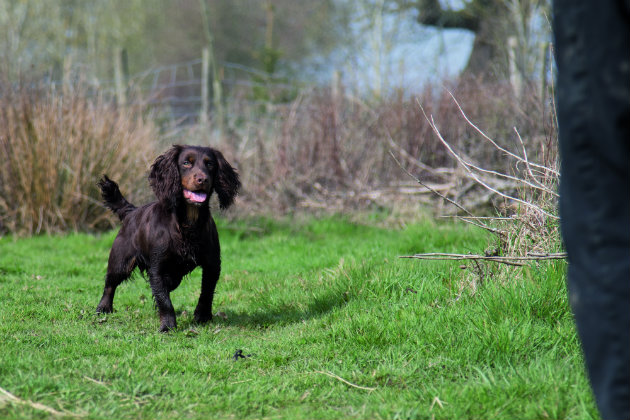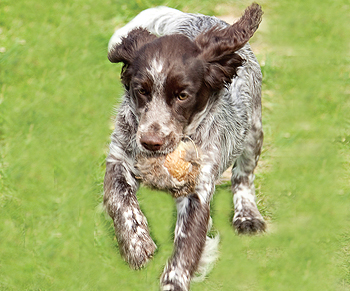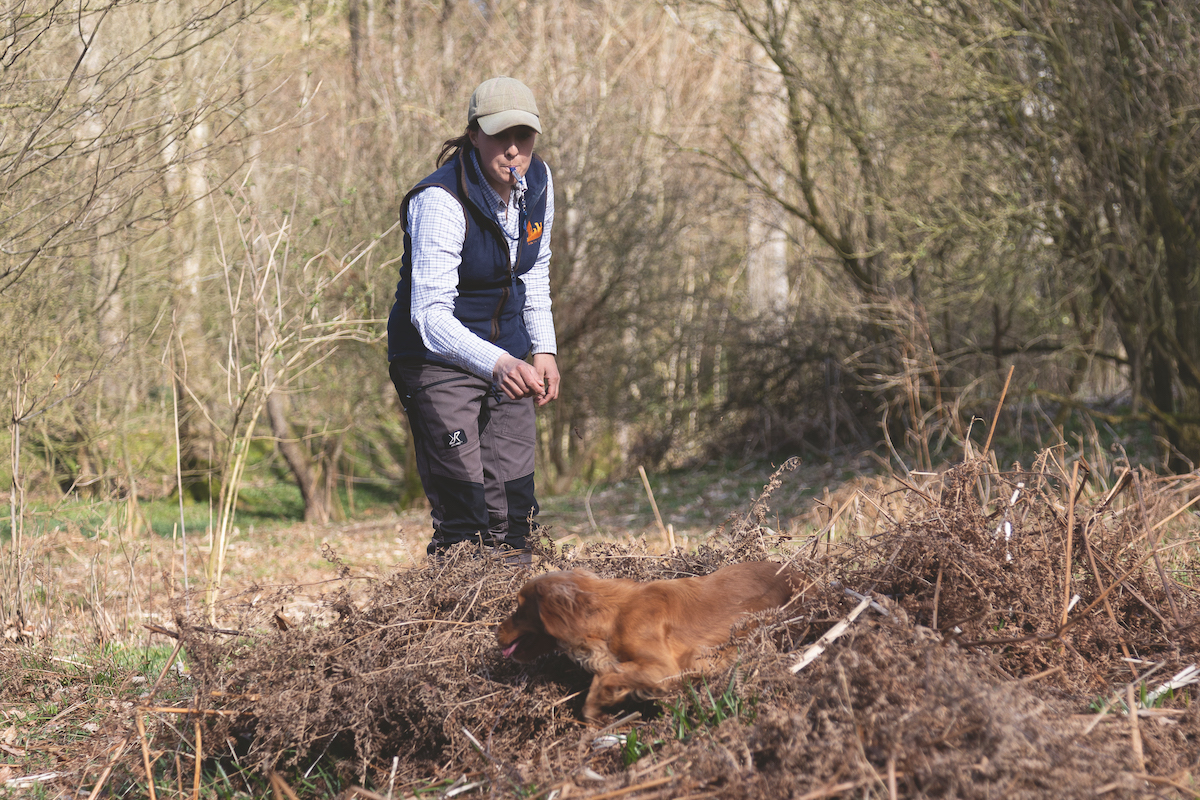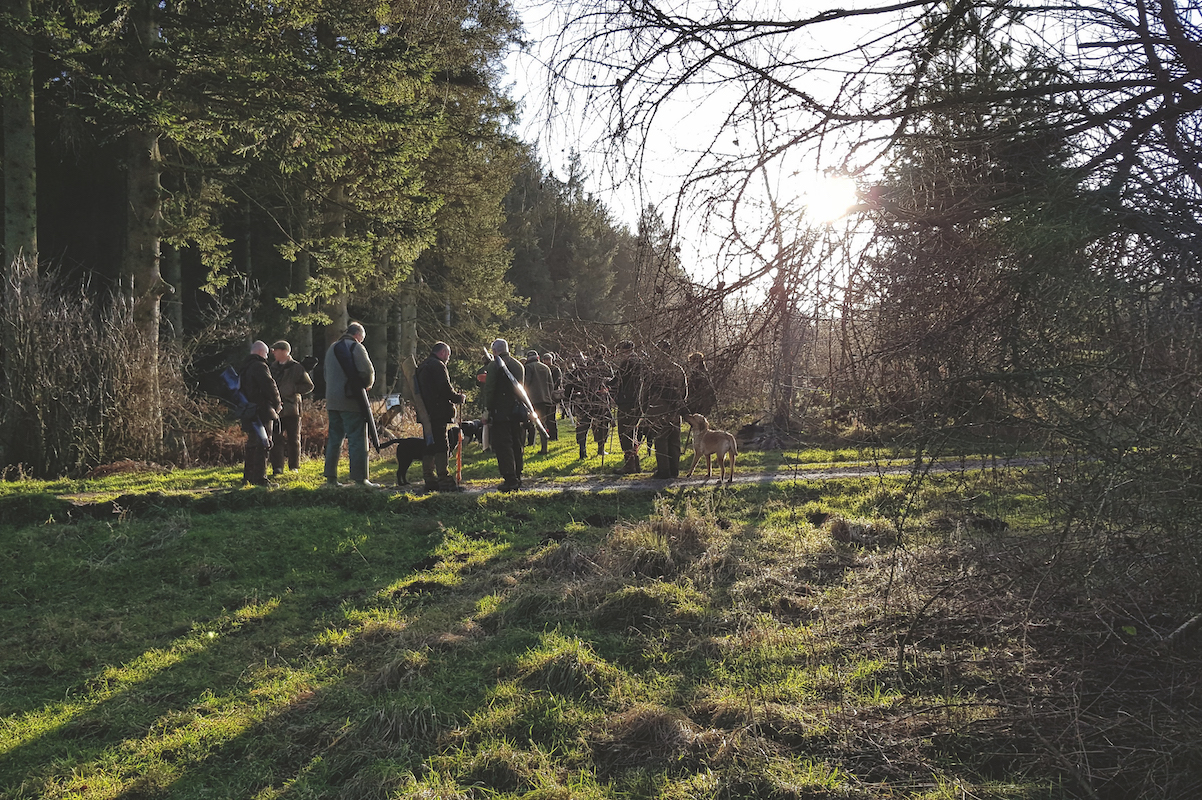Gundog problems – dogs that will not mark
A common problem is gun dogs that will not mark – due in a large part to the way they have been trained, says Graham Watkins

The dog is looking at the handler not at the dummy
One of the gundog problems we see commonly at Gamegoer is dogs that will not mark. There are several reasons this can occur, but it is due mainly to the way they have been trained. A large proportion of handlers train their dogs on their own and two main problems can manifest. The first is when the dog will only go out a certain distance for a thrown dummy and constantly hunts short once the distance is extended. The second is that the dog is always looking at the handler rather than watching the dummy. This trait can sometimes be seen shortly after you have gone through the steadying process, especially if you have a soft-natured dog.
Marking or hunting short
This can be a really frustrating trait in a dog and the reason “marking or hunting short” occurs is quite simple. Give the handler a dummy and ask them to throw it as far as they can and the chances are that this is the distance that the dog automatically goes out and starts to hunt. It has been conditioned by default to run out 20m and it will find something.
There are a couple of methods that we use to help get the dog to extend, not only the distance it will go out for a retrieve but also to improve its marking abilities – both require the help of an assistant. For the first exercise, get your helper to stand approximately 10m from you and the dog, they need to make a “Brrrr” noise and throw the dummy down as soon as the dog looks to see where the noise came from.
The key to this technique is to use a reference point, such as a tree or fence post. Initially, you should send the dog as soon as the dummy hits the ground. Don’t worry too much about steadiness at this stage because you can always increase the wait time once the dog’s confidence has improved.

Enlist an assistant to help your dog improve its marking abilities
Most trainers will now move the dummy thrower further away to increase the distance, but we have found that we get better and quicker results by moving the handler and dog away while continuing to use the tree/fence post as a reference point for the dog. Remember, dogs learn by repetition and success and in this exercise we are using both.

Use a tree as reference
Over a period of time you can increase the distance as far as you think necessary, and once the lesson has been fully ingrained you can then start to throw the dummy out into the open and off to one side of the reference point. Eventually, you should be able to just to use open ground, but don’t fall in to the trap of always sending the dog the same distance, mix it up a bit, otherwise you could end up back where you started.

Move the dog and handler away once confidence has increased
Getting a good mark on a retrieve
Some gundogs have an uncanny knack of being able to get a good mark on a retrieve and others are so fixed on the handler they constantly miss-mark. This can be particularly annoying when entering working tests or if you plan to shoot over your dog. I have known spaniels that are not great markers because when the dog flushes game, or is hunting and a dummy is thrown, the handler nearly always blows the stop whistle and the dog automatically looks back and not at the retrieve or flush.

Some gundogs have an uncanny knack of being able to get a good mark on a retrieve
Many years ago a trainer was telling me that if he was on his own he would try to throw the dummy against a tree or bush. The noise would quite often make the dog look around to where the dummy landed and he has had some success in using this technique to improve the dog’s marking ability.
There are also some very good remote controlled dummy launchers currently on the market and it may be worth investing in one such as the ILauncher Mark Air especially if once again you train on your own. When using pieces of kit such as this, it is important not to become lazy. Just as before, increase the distance by moving the dog further away from the launcher, this particular model throws the dummy or tennis ball fairly consistently, so that you can get retrieves in the same area as before.

It may be worth investing in a dummy launcher like the ILauncher Mark Air
Try using a high contrast (black and white) dummy and this will help the dog get a good mark. Once again, send the dog quickly to start with so it doesn’t lose its mark. The best way to get a dog to look away from the handler to mark a retrieve is to create a noise from where the dummy is being thrown.
In the later stages of training this can be a starting pistol or even a clap of the hand. I find if I consistently use the command “mark”, the dog will quickly realise what this means and will naturally start to look out for the dummy. Another method we use is quite simple and can be very effective as a forerunner when moving on to longer-distance retrieves.
The majority of handlers throw the retrieve and send their dogs from their side, but by simply moving a few steps in front of the dog and throwing the dummy away from you, the dog will already be looking in the right direction to get a mark. This exercise can be useful if you have a dog that is really transfixed on its handler.
What size of dummy is best to start gundog training?
What size of dummy is best to start gundog training? I’m starting my spaniel pup on retrieving.
How can I stop my gundog from dropping the dummy? (And other dummy training problems.)
How do I stop my gun dog spitting her dummy out, I have tried placing it in her mouth while…










